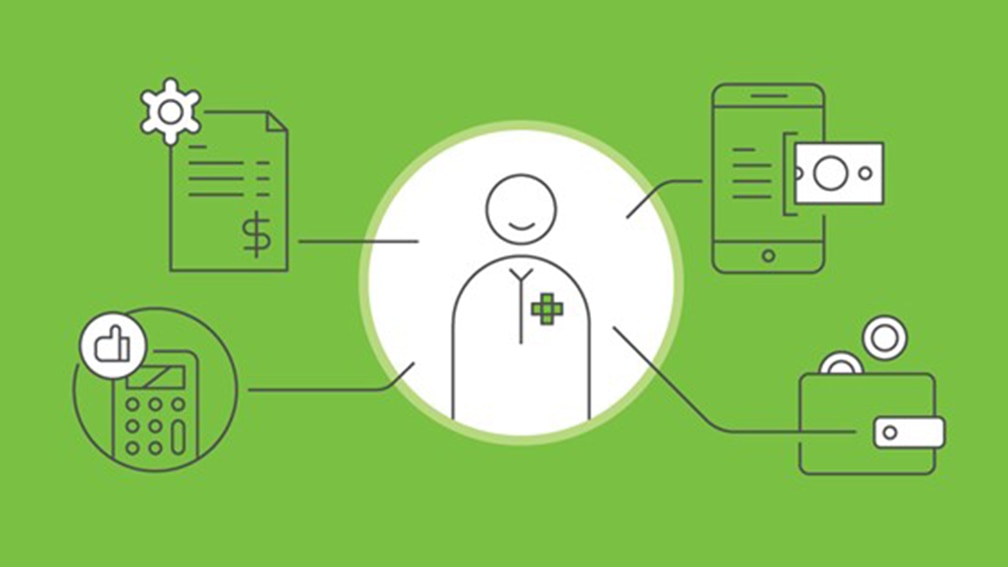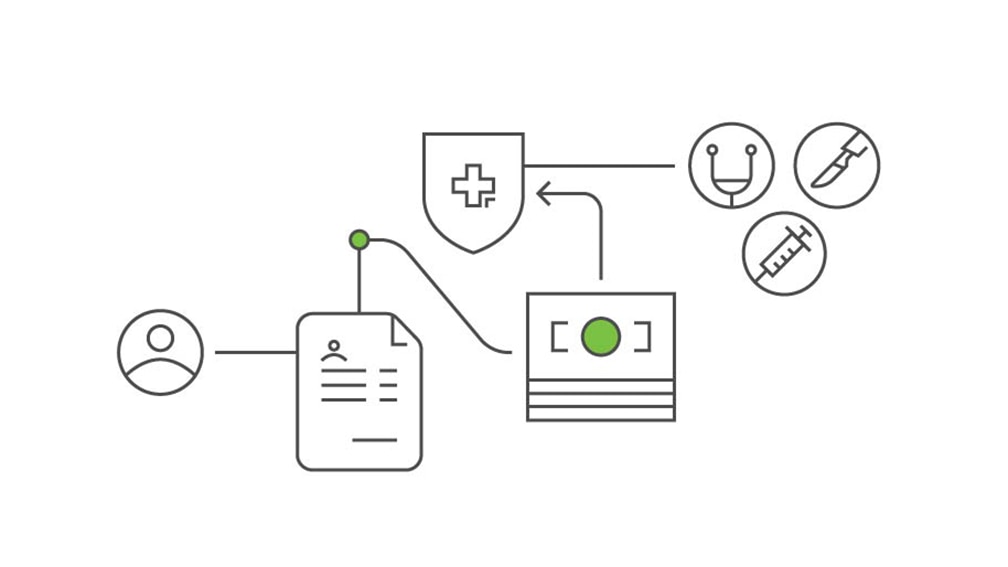How to Help Increase Healthcare Revenue
From workflow inefficiencies to navigating ever-changing regulations, increasing healthcare revenue can be challenging. Read on for our helpful strategies.
By Sarah Stasik
Posted Sep 13, 2024 - 7 min read

Recent years have put health systems’ bottom lines to the test. According to Becker's Hospital Review, the average hospital operating margin in 2020 (without considering CARES Act funding) was a meager 0.3 percent. That reflects a 55 percent year-over-year decrease—and the challenges aren't limited to hospitals.
Changing Medicare and insurance regulations, fluctuations in the economy, and a self-pay landscape that's evolved rapidly in the past decade all contribute to challenges for healthcare revenue cycle management (RCM). In fact, due to ever-rising deductibles—a 111 percent increase in the burden of deductibles across all covered workers, according to a 2020 KFF report— patients are the fastest growing payer group. And as patient responsibility grows for out-of-pocket healthcare expenses, health systems may need to devote more time and effort toward collecting payment from patients. So while insurance claims serve as the largest source of revenue for health systems, patient payments will likely continue to play an important role as patient financial responsibility increases.
The good news? There are plenty of smart ways to help increase revenue in health systems in a sustainable way while helping patients better understand the medical billing process and get the care they need. Read on to learn some of the top strategies to boost your healthcare revenue.
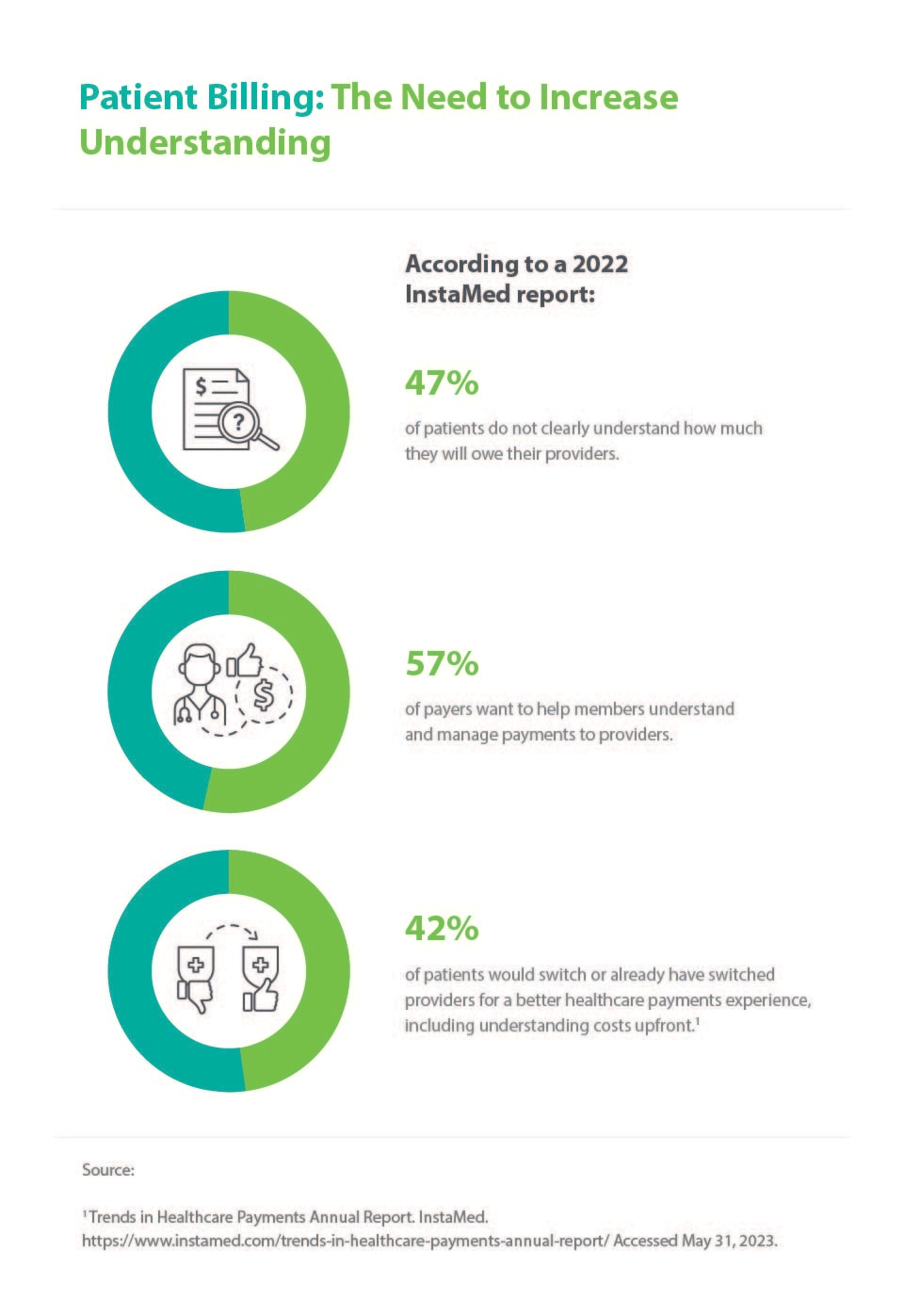
14 Ways to Help Improve Revenue Cycle in Healthcare
Proactive processes, the right technology, understanding medical revenue cycle data, and ensuring claim accuracy can all increase healthcare revenue.
1. Invest in specialty billing software
The medical billing industry is worth around $12.2 billion in 2022, and experts predict it will grow at a 12.26 percent compound annual growth rate between 2023 and 2030. The industry includes specialty billing software as well as vendors that handle some or all billing and collections processes on behalf of healthcare organizations.
There's a reason for that steady growth: Providers may find that it's less expensive and easier to rely on third-party solutions for billing and collections. By investing in specialty software, your health system or practice may be able to cut to the chase regarding documentation and claim needs and cut down on the time your administrative and coding staff spends on billing and collecting payments — from insurers and patients.
Collecting patient payments is a critical component of RCM.
2. Negotiate better insurance contracts
Consider going straight to the source to request more money from payers. Start with contracts that pay rates under Medicare allowable rates - those may be quick wins for organizations.
Before you negotiate your contract, though, you may want to ensure you can walk away from it. Look at the big picture for all patient accounts carrying that insurance to see how profitable (or not profitable) it is.
If you can't afford to walk away from the contract, consider starting negotiations with another payer first.
3. Improve provider coding processes
Issuers may deny claims for reasons including incomplete information and lack of medical necessity. These are just two denial reasons that can be linked, at least in part, to medical coding issues.
You may be able to improve provider coding processes to support clean claims by:
- Hiring experienced medical coders
Consider working with recruiting organizations or reaching out to medical coding or vocational schools to find exceptional candidates. - Investing in billing software
Free up your coders to attend to the most complex claims by investing in specialty billing software which automates tedious coding processes. - Support continuous training
Ensure your staff has access to workshops, training materials, and journals so they can stay up-to-date with medical coding requirements.
4. Create stronger insurance collections processes
While denials can be frustrating, they’re often avoidable. Consider sitting down with administrative staff and mapping out your insurance collections processes. You may want to identify bottlenecks where claims get delayed — those tend to contribute to timely filing losses. By working to remove those bottlenecks with automations, better workflows, and staff education, you could potentially increase revenue by billing every claim on time.
5. Invest in upfront insurance verification tools
According to data from Change Healthcare, nearly one-fourth (22 percent) of denials relate in some way to issues with registration and eligibility. Simply ensuring a patient is actually covered by an insurance policy at the time of service — and that the insurance covers said service — may dramatically decrease denials.
Consider also adding insurance verification tools and processes to your preregistration and check-in procedures. For instance, you could set up supporting patient portals and ask patients to enter insurance information online when they make an appointment. You may also want to train front office staff to run verifications via online tools or call insurance companies to verify coverage when the patient arrives.
6. Establish financial KPIs
It can be tempting to let revenue cycle management in healthcare run on autopilot, especially if you're paying third-party vendors. But you may benefit from keeping an eye on those processes.
Some key performance indicators you may want to establish and track include AR days, denial rates, top denial reasons, time to bill, and payer makeup.
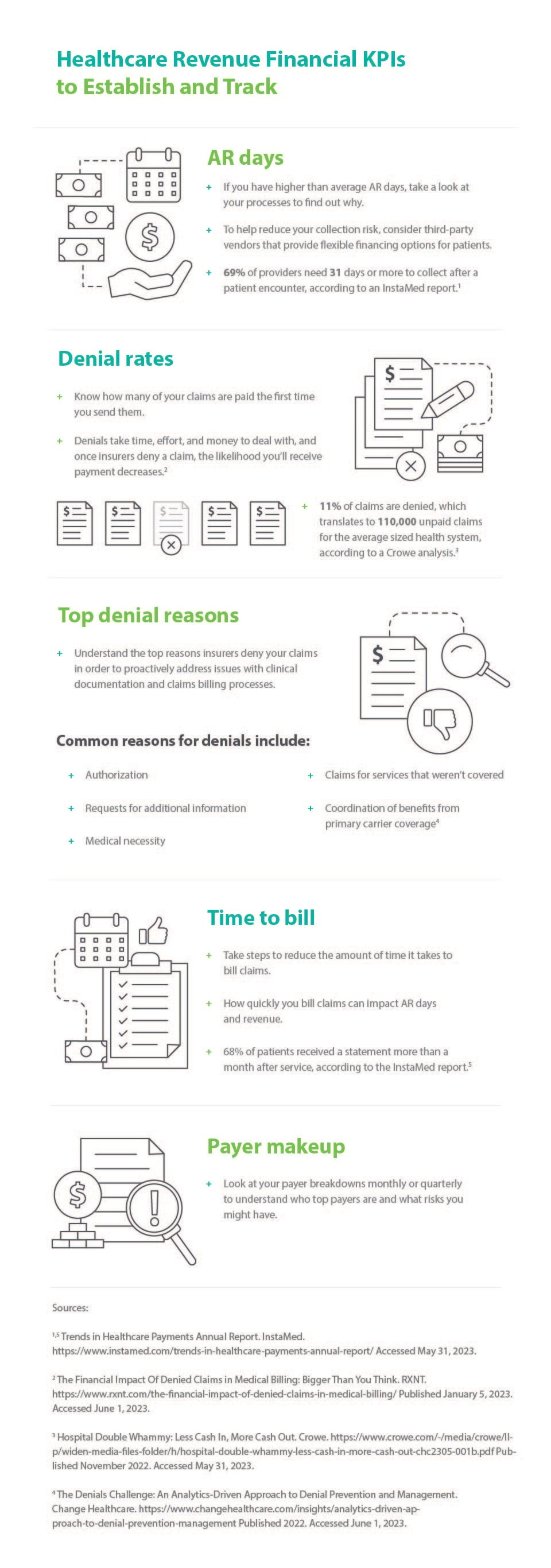
7. Conduct a revenue cycle assessment
The claims process begins the moment a prospective patient calls your office and someone records information about them in the electronic health record (EHR). Something as simple as a typo can derail all the revenue associated with that patient.
A revenue cycle assessment looks at your processes holistically to find potential weaknesses you can address. The assessment often covers:
- Scripts for early financial conversations covering all payment options
- Processes for collecting information and payment at the point of service
- Use and compliance with patient portals
- Third-party vendor solutions and how well they work for your office
- Efficacy of reporting procedures
- Claims processes
- Current AR challenges
- Denial reporting and whether you follow up denials quickly and well
You can do the assessment yourself or pay an outside vendor to conduct it. Either way, you may benefit from finding revenue cycle pain points and addressing them with new processes, technical solutions, or training.
8. Offer free or affordable patient education classes
Research published in the Journal of the American Medical Association (JAMA) indicates that an estimated 17.8% of Americans had medical debt in collections in June 2020.
Medical expenses and billing can be complex, and patients don't often understand how much they'll owe and why. Patients also may not understand how their insurance works and how they can get more or better coverage.
Offering free or low-cost education classes about these matters can help increase the likelihood patients understand their responsibilities and options (including flexible financing) —and that you'll be paid by self-care clients.
9. Simplify patient billing cycles
On top of offering patient education, it’s helpful for you and your patients when they can easily understand billing processes and cycles.
For example, rather than process bills a month after the service for every single patient — which leaves your staff handling patient statements almost every day — consider choosing a monthly date to process bills.
It’s a good idea to review patient statements to ensure they're easy to understand. Avoid medical jargon and clearly delineate the amounts:
- You’re billing
- The insurance company paid
- You’re disallowing
- The patient owes
10. Create 24/7 payment options, including easy online payments
Historically, most patients paid medical bills with a check. Today, patients may want to pay by check or credit card, or with a digital payment method such as PayPal. Consider offering helpful online patient payment portals that support as many secure payment options as possible and let people handle their bills 24 hours a day without dealing with long hold times. Speaking of payment options, you may want to offer patients flexible financing options, including the CareCredit credit card, to help them fit healthcare costs into their budgets.
Healthcare organizations can also adopt practices—such as partnering with CareCredit to offer flexible financing options—to help shift collection risk and improve revenue.
11. Proactively address denials and rejections
Timely filing doesn't just apply to original claims. Once insurers deny a claim, the clock starts—so you may benefit from a proactive process for managing denials.
Most billing software should have built-in rejection reporting. Within seconds (or at least 24 hours) of submitting claims, you may know which electronic claims didn't make it to the clearing house. Consider ensuring a member (or members) of your staff check those reports on a daily basis, correct the claims as necessary, and resubmit them.
Denials are less streamlined. You may learn about them via electronic reports, explanations of benefits (EOBs), or physical mail. Consider implementing processes to capture all denials and route them to workflows so they can be handled quickly.
12. Regularly follow up on unpaid claims
When it comes to claims, no news isn’t always good news. Instead, you may want to be proactive and analyze claims payment data so you know how fast each payer typically pays or denies claims. You may benefit from pulling reports or setting automatic follow ups to find out why claims haven't been processed if they fall outside of those timelines.
13. Help patients get insured
According to the Centers for Disease Control and Prevention , 12.2 percent of people aged 18 to 64 don't have insurance. For children, the number drops to around 5 percent, due in part to more expansive coverage options under Medicaid plans. Consider training patient-facing medical office staff to provide helpful guidance and information on insurance options.
14. Cut overhead expenses
Research shows that excessive administrative costs can place a significant burden on the U.S. healthcare system. To reduce the amount of time spent on administrative tasks without impacting the quality of service and claims billing, consider investing in training, revenue cycle billing software, and automation tools.
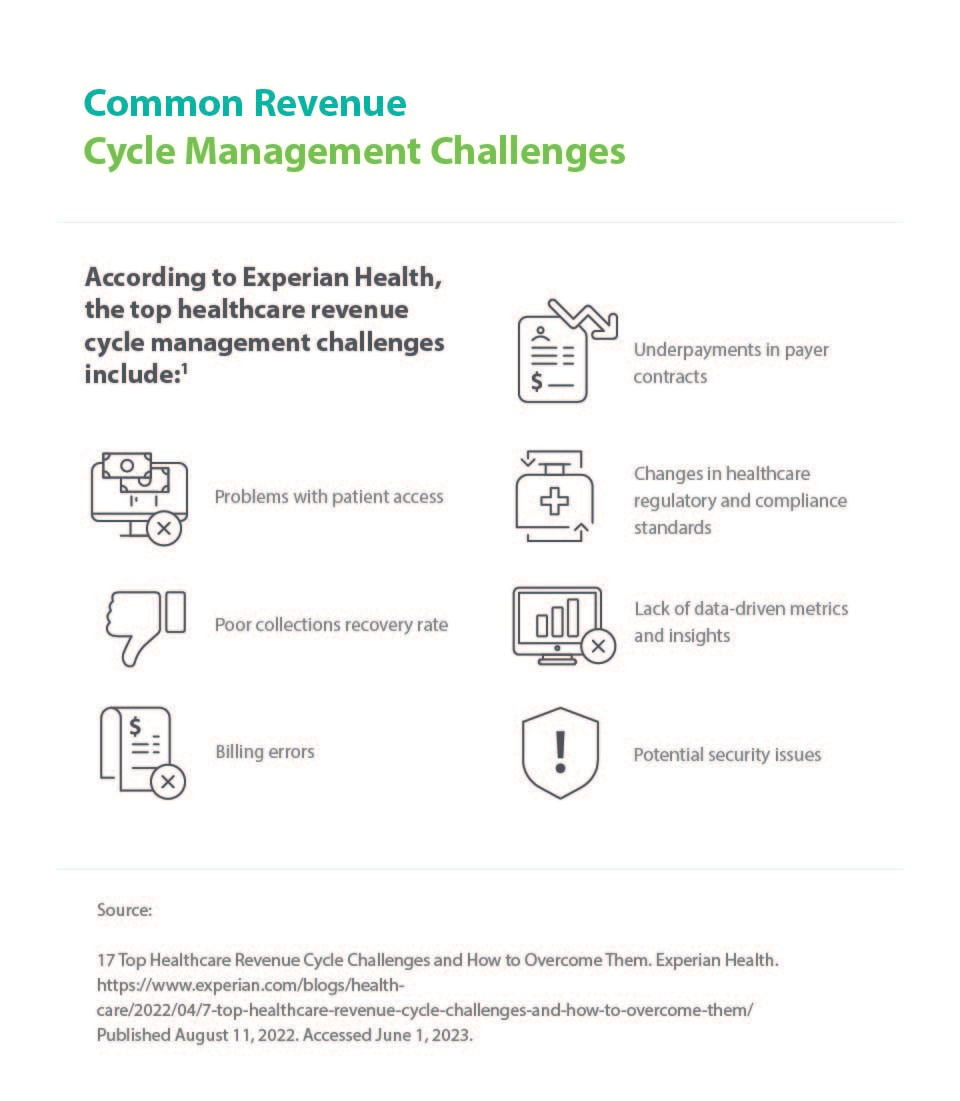
Conclusion
While medical billing and revenue cycle management can be complex and present many challenges, you can start to increase revenue by looking at your own data and processes and taking important steps to help patients pay for care. Then, consider investing in the right technology, patient and staff education, and new process implementation to successfully improve your bottom line while helping patients get the care they need.
About the Author

Sarah Stasik
Before venturing into freelance project management and writing work, Sarah Stasik was a healthcare revenue cycle manager. She has hands-on experience in managing healthcare AR, including minimizing claims denials and improving appeals, collections, and cash posting processes. Sarah is also a certified Six Sigma Black Belt.
Healthcare payment and financing solution
The CareCredit health and wellness credit card helps improve the payment experience for patients and clients, and your financial performance.
Get StartedThis content is subject to change without notice and offered for informational use only. You are urged to consult with your individual business, financial, legal, tax and/or other advisors and/or medical providers with respect to any information presented. Synchrony and any of its affiliates, including CareCredit, (collectively, “Synchrony”) makes no representations or warranties regarding this content and accept no liability for any loss or harm arising from the use of the information provided. Your receipt of this material constitutes your acceptance of these terms and conditions.



